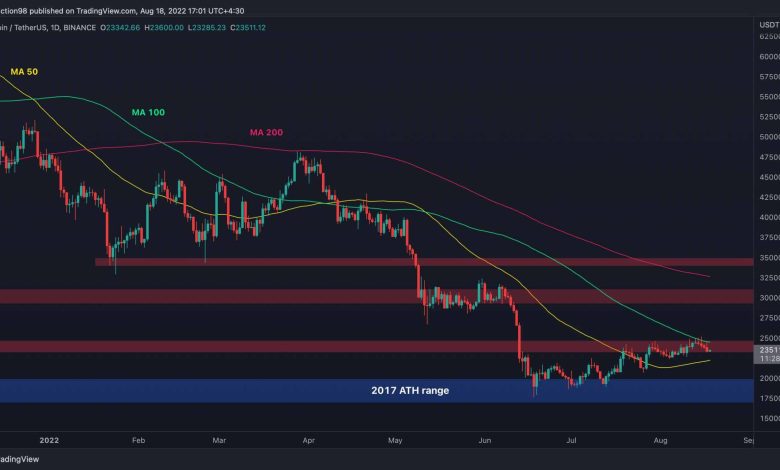Analyzing Bitcoin Price Movements

- Understanding the factors influencing Bitcoin price fluctuations
- Analyzing historical data to predict future Bitcoin price movements
- The impact of market trends on Bitcoin price volatility
- Comparing Bitcoin price movements to traditional financial assets
- Exploring the role of investor sentiment in Bitcoin price changes
- Strategies for effectively analyzing and interpreting Bitcoin price movements
Understanding the factors influencing Bitcoin price fluctuations
Bitcoin price fluctuations are influenced by a variety of factors that can impact the market in different ways. Understanding these factors is crucial for investors and traders looking to make informed decisions. Some of the key factors influencing Bitcoin price movements include:
- Market demand and supply: The basic economic principle of supply and demand plays a significant role in determining the price of Bitcoin. When demand exceeds supply, prices tend to rise, and vice versa.
- Regulatory developments: Government regulations and policies can have a significant impact on the price of Bitcoin. Positive regulatory news can lead to price increases, while negative news can cause prices to drop.
- Market sentiment: Investor sentiment and market psychology can also influence Bitcoin prices. Positive news and developments in the cryptocurrency space can lead to increased investor confidence and higher prices.
- Technological advancements: Innovations in blockchain technology and improvements to the Bitcoin network can also impact prices. Upgrades and new features can attract more users and investors, driving up demand.
- Macro-economic factors: Global economic conditions, such as inflation rates, interest rates, and geopolitical events, can also affect Bitcoin prices. Economic uncertainty can lead investors to seek alternative assets like Bitcoin as a store of value.
By monitoring and analyzing these factors, investors can gain a better understanding of the forces driving Bitcoin price movements and make more informed decisions. It is essential to stay informed about the latest developments in the cryptocurrency space and to consider the broader economic and regulatory environment when evaluating Bitcoin’s price potential.
Analyzing historical data to predict future Bitcoin price movements
When it comes to predicting the future movements of Bitcoin prices, analyzing historical data can be a valuable tool. By looking at past trends and patterns, analysts can gain insights into potential price movements in the future. This type of analysis involves examining factors such as trading volume, market sentiment, and macroeconomic indicators to identify potential trends.
One common approach to analyzing historical data is through technical analysis, which involves studying price charts and using mathematical indicators to forecast future price movements. Another method is fundamental analysis, which looks at the underlying factors that could influence the price of Bitcoin, such as regulatory developments or adoption rates.
By combining these different types of analysis, analysts can develop a more comprehensive understanding of the factors that could impact Bitcoin prices in the future. While past performance is not always indicative of future results, analyzing historical data can provide valuable insights for investors looking to make informed decisions about their Bitcoin holdings.
The impact of market trends on Bitcoin price volatility
Market trends play a significant role in influencing the volatility of Bitcoin prices. Various factors such as supply and demand, regulatory developments, macroeconomic indicators, and investor sentiment can all impact the price movements of Bitcoin. Understanding these market trends is crucial for predicting potential price fluctuations and making informed investment decisions.
One key factor that affects Bitcoin price volatility is supply and demand dynamics. The limited supply of Bitcoin, with a maximum cap of 21 million coins, can lead to price fluctuations based on changes in demand. As more investors enter the market, the price of Bitcoin may increase due to higher demand. Conversely, a decrease in demand can lead to price drops. Monitoring these supply and demand trends can help investors anticipate price movements.
Regulatory developments also play a significant role in influencing Bitcoin price volatility. Government regulations, such as bans on cryptocurrency trading or restrictions on exchanges, can impact investor confidence and lead to price fluctuations. Positive regulatory news, on the other hand, can boost investor sentiment and drive up prices. Keeping track of regulatory changes is essential for understanding the potential impact on Bitcoin prices.
Moreover, macroeconomic indicators such as inflation rates, interest rates, and geopolitical events can also affect Bitcoin price volatility. Economic instability or uncertainty can drive investors towards safe-haven assets like Bitcoin, leading to price increases. Monitoring these macroeconomic trends can provide valuable insights into potential price movements and help investors make informed decisions.
Lastly, investor sentiment plays a crucial role in determining Bitcoin price volatility. Market psychology, news events, and social media trends can all influence how investors perceive the value of Bitcoin. Positive sentiment can drive up prices, while negative sentiment can lead to price drops. Understanding and analyzing investor sentiment can help predict potential price movements and identify trading opportunities.
Comparing Bitcoin price movements to traditional financial assets
When comparing Bitcoin price movements to traditional financial assets, it is important to consider the differences in volatility and market behavior. While traditional assets such as stocks and bonds are influenced by factors like company performance and economic indicators, Bitcoin is known for its high volatility and speculative nature.
One key difference is that Bitcoin operates independently of government policies and central banks, making it a decentralized and borderless form of currency. This can lead to more drastic price fluctuations compared to traditional assets, which are often influenced by macroeconomic factors.
Another factor to consider is the level of institutional adoption and regulation surrounding Bitcoin compared to traditional assets. While stocks and bonds are heavily regulated and traded on established exchanges, Bitcoin is still relatively new and subject to less oversight.
Despite these differences, some investors view Bitcoin as a potential hedge against inflation and economic uncertainty, similar to gold and other precious metals. This has led to increased interest in Bitcoin as a diversification tool in investment portfolios.
Exploring the role of investor sentiment in Bitcoin price changes
Investor sentiment plays a crucial role in influencing the price movements of Bitcoin. The emotions and attitudes of investors towards the cryptocurrency can have a significant impact on its value. Positive sentiment can drive up prices as investors become more optimistic about the future of Bitcoin, leading to increased demand. Conversely, negative sentiment can result in price drops as investors may sell off their holdings out of fear or uncertainty.
Understanding investor sentiment is essential for predicting Bitcoin price changes. By analyzing social media, news articles, and market trends, researchers can gain insights into the prevailing sentiment among investors. Sentiment analysis tools can help quantify and measure the overall mood of the market, providing valuable data for traders and analysts.
Investor sentiment can be influenced by a variety of factors, including regulatory developments, macroeconomic trends, and technological advancements. For example, positive news about the adoption of Bitcoin by major institutions can boost investor confidence and drive up prices. On the other hand, negative news such as security breaches or regulatory crackdowns can lead to a decrease in sentiment and a subsequent drop in prices.
Overall, investor sentiment is a key driver of Bitcoin price movements. By monitoring and analyzing sentiment data, traders and analysts can gain valuable insights into market trends and make more informed decisions. As the cryptocurrency market continues to evolve, understanding investor sentiment will be crucial for navigating the volatile and unpredictable nature of Bitcoin prices.
Strategies for effectively analyzing and interpreting Bitcoin price movements
When it comes to effectively analyzing and interpreting Bitcoin price movements, there are several strategies that can be employed to gain valuable insights into the market trends. By utilizing these strategies, investors and traders can make informed decisions to maximize their profits and minimize risks.
- Utilize technical analysis: Technical analysis involves studying past market data, primarily price and volume, to predict future price movements. By analyzing charts and patterns, traders can identify trends and potential entry and exit points.
- Stay informed about market news: Keeping up to date with the latest news and developments in the cryptocurrency space can provide valuable insights into factors that may influence Bitcoin’s price. News about regulations, adoption, and technological advancements can all impact the market.
- Monitor market sentiment: Sentiment analysis involves gauging the overall feeling or mood of market participants towards Bitcoin. By tracking social media, forums, and news outlets, traders can get a sense of market sentiment and potential price movements.
- Consider fundamental analysis: Fundamental analysis involves evaluating the intrinsic value of an asset by looking at factors such as supply and demand, adoption rates, and network activity. Understanding the underlying fundamentals of Bitcoin can help investors make more informed decisions.
- Use risk management techniques: Managing risk is crucial when trading Bitcoin due to its volatile nature. Techniques such as setting stop-loss orders, diversifying your portfolio, and not investing more than you can afford to lose can help mitigate potential losses.
By combining these strategies and staying disciplined in your approach to analyzing Bitcoin price movements, you can increase your chances of success in the cryptocurrency market. Remember that no strategy is foolproof, and it’s essential to continuously adapt and refine your approach based on market conditions and new information.






